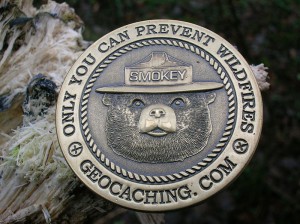 The proliferation of GPS-enabled handheld devices has resulted in a global craze known as geocaching. If you’re not familiar, here’s how it works. You go out with a GPS device of some kind and look for containers hidden by other geocachers. When you find one, you log your name in the logbook inside, put it back and continue the search for other containers (AKA “caches”). It’s basically an amped-up version of a scavenger hunt with high-tech toys in tow.
The proliferation of GPS-enabled handheld devices has resulted in a global craze known as geocaching. If you’re not familiar, here’s how it works. You go out with a GPS device of some kind and look for containers hidden by other geocachers. When you find one, you log your name in the logbook inside, put it back and continue the search for other containers (AKA “caches”). It’s basically an amped-up version of a scavenger hunt with high-tech toys in tow.
Originally, the sport was designed for GPS, or Global Positioning System devices. Since the smart phone revolution has taken over the tech world, a plethora of other GPS-enabled devices has joined the game. There are many apps for iPhone, iPod Touch, Android, and Blackberry that allow users of these phones to join in the geochaching fun.
For the traditional geocache, a geocacher will place a waterproof container containing a log book (with pen or pencil) and trade items then record the cache’s coordinates. The coordinates and details of the location are then recorded on a listing site.
For further information on the sport of geocaching, it’s origin, history, variations, and a glossary of terms, check out wikipedia’s geocaching page.
For information regarding engaging in the sport locally, there is a Minnesota geocaching web page, on which you can get info on how to get started, what items to look for and a host of other things.
Geocaching home page: http://www.geocaching.com/
